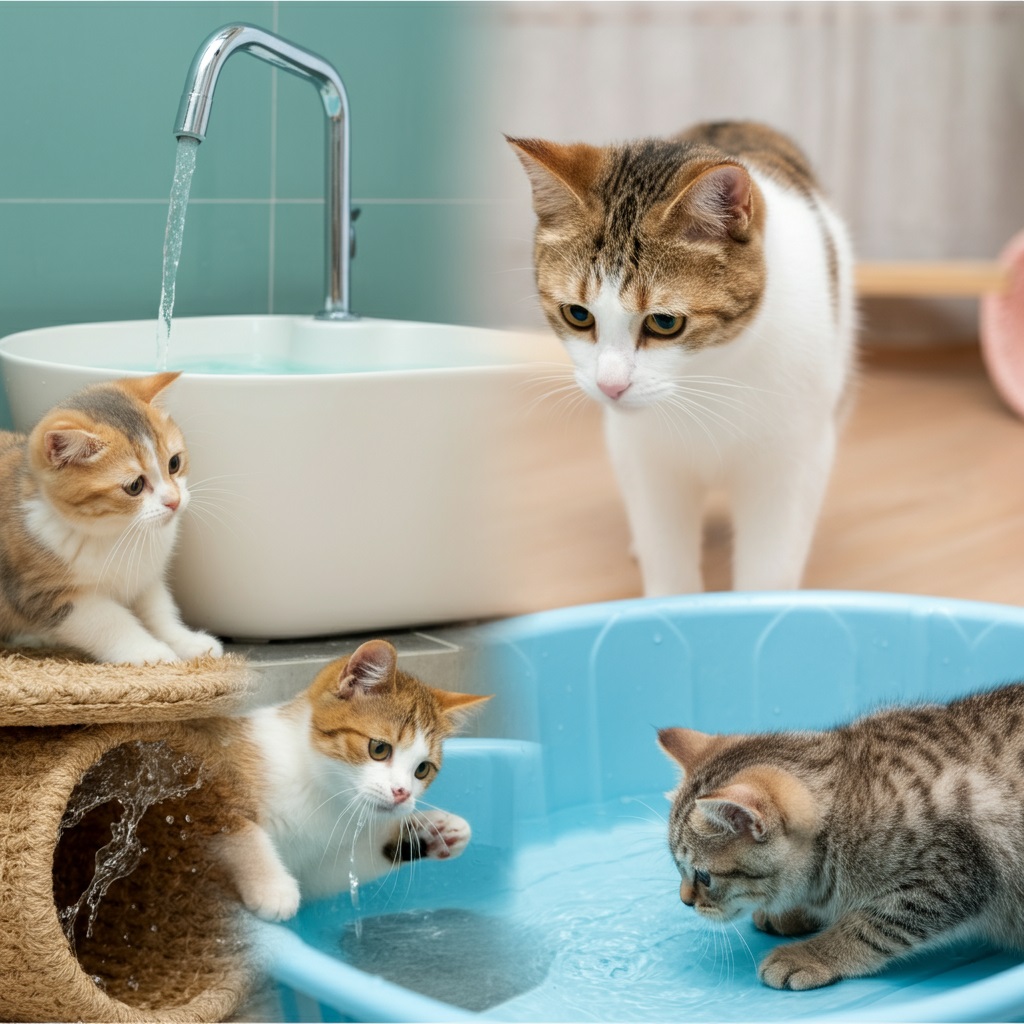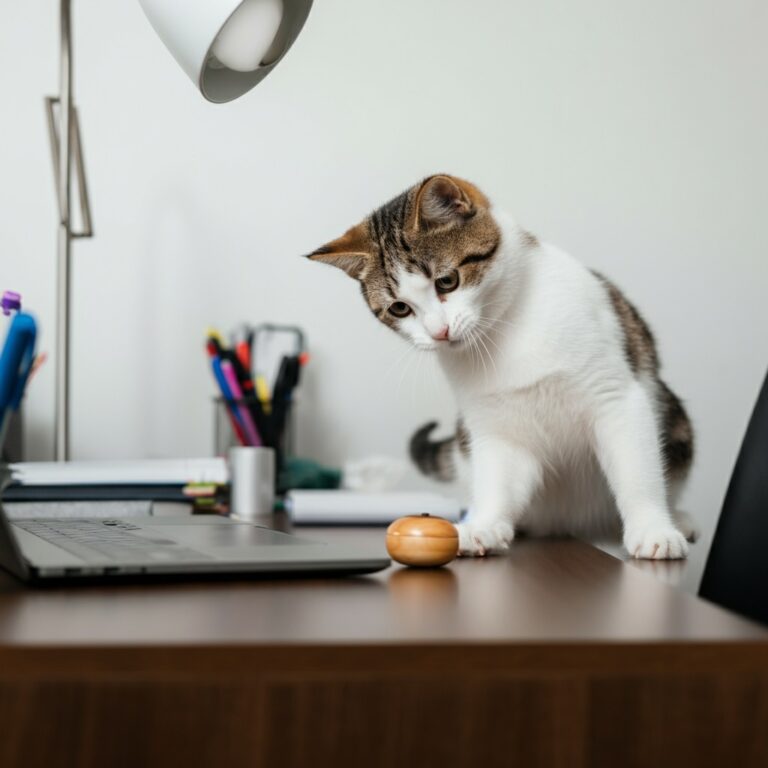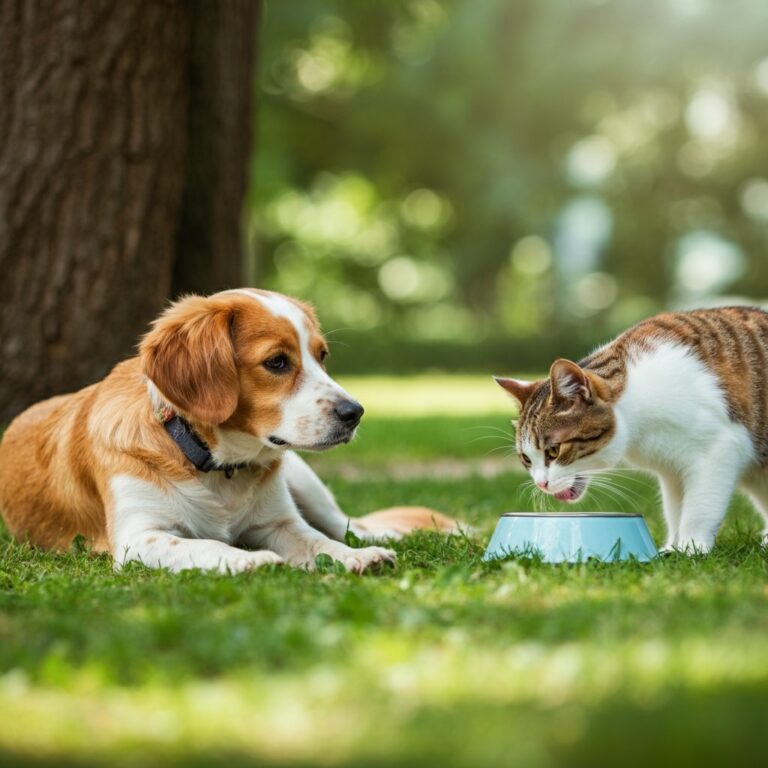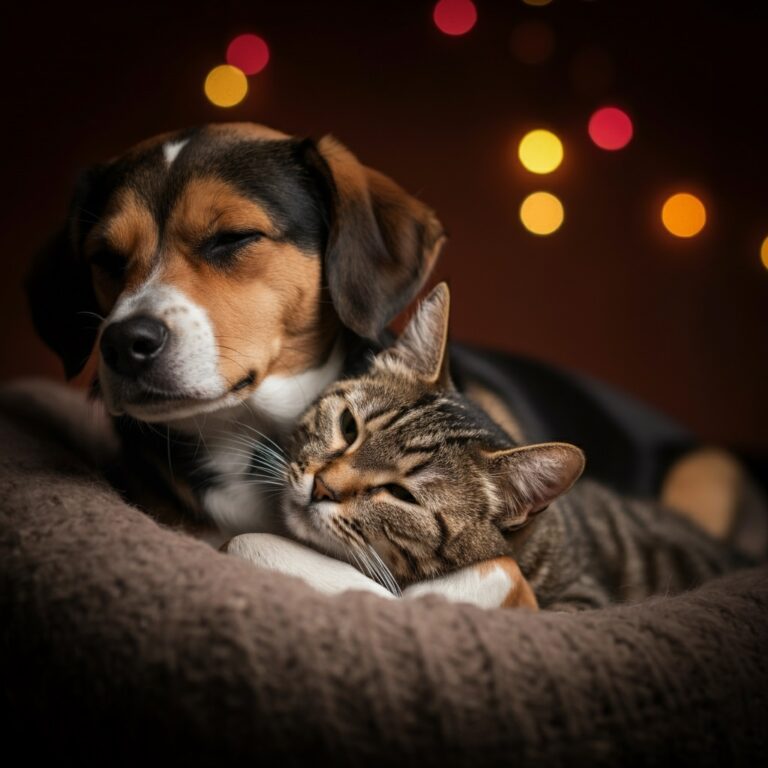
Most cat owners have witnessed the classic scene: bath time approaches, and their feline friend transforms into a furry tornado of claws and protests. Yet scroll through social media, and you’ll find videos of cats happily paddling in pools or playing with faucets. This puzzling contradiction leaves many pet parents wondering why their water-averse kitty seems so different from those aquatic adventurers online.
The relationship between cats and water is far more complex than the simple stereotype suggests. While it’s true that many domestic cats show a strong aversion to getting wet, others genuinely enjoy water-based activities. Understanding why these preferences exist can help you better care for your feline companion and maybe even help a water-phobic cat become more comfortable around H2O.
The answer lies in a fascinating combination of evolutionary history, individual genetics, early experiences, and environmental factors. Some cats are naturally drawn to water due to their breed heritage, while others develop their preferences through positive or negative associations formed during kittenhood.
The Evolutionary Background of Cats and Water
Domestic cats descended from wild cats that primarily lived in arid regions of the Middle East and North Africa. These desert-dwelling ancestors, particularly the African wildcat (Felis lybica), evolved in environments where large bodies of water were scarce. Their survival depended on obtaining moisture from their prey rather than drinking from rivers or lakes.
This evolutionary heritage explains why cats have developed several unique adaptations that reduce their need for water consumption. Their kidneys are incredibly efficient at concentrating urine, allowing them to conserve water better than most mammals. Additionally, cats have a relatively low thirst drive compared to dogs and other animals.
However, not all wild cat species share this desert ancestry. Some big cats, like tigers and jaguars, are excellent swimmers who hunt in and around water. These aquatic tendencies occasionally surface in domestic cats, especially those with genetic ties to water-loving breeds.
The evolutionary perspective also explains why cats are naturally cautious around water. For their ancestors, unexpected encounters with water could signal danger—flash floods, predators lurking near water sources, or unfamiliar territory. This inherited wariness helped keep wild cats safe but can manifest as fear in our modern house cats.
Breed-Specific Water Preferences
Genetics play a significant role in determining a cat’s relationship with water. Certain breeds have developed reputations for being more water-tolerant or even water-loving due to their specific evolutionary paths and selective breeding.
Water-Loving Breeds
Turkish Van cats are perhaps the most famous water enthusiasts in the feline world. Originating from the Lake Van region of Turkey, these cats developed alongside large bodies of water and traditionally engaged in swimming. Their unique coat texture—soft and water-resistant—makes them natural swimmers.
Maine Coon cats also show a notable affinity for water. These large, fluffy cats originated in harsh New England climates where they needed to be resourceful hunters. Their water-resistant coats and large paws make them capable swimmers, and many Maine Coons enjoy playing with water bowls or joining their owners in the shower.
Bengal cats carry genes from the Asian Leopard Cat, a wild species known for fishing and swimming. Many Bengals retain this aquatic interest, often playing in water dishes or showing curiosity about running faucets.
Norwegian Forest Cats developed in Scandinavia’s wet climate, resulting in water-resistant double coats and generally positive associations with moisture. While not all individuals love water, the breed tends to be more tolerant than average.
Water-Averse Breeds
Conversely, some breeds show stronger tendencies toward water avoidance. Persian cats, with their long, dense coats that take forever to dry, often dislike getting wet. Scottish Folds and British Shorthairs typically prefer staying dry, possibly due to their stocky builds making swimming more challenging.
It’s important to remember that breed tendencies are just that—tendencies. Individual personality and experience often override genetic predisposition.
The Critical Role of Early Experiences
A cat’s earliest experiences with water often determine their lifelong relationship with it. The socialization period, which occurs between 2-7 weeks of age, is when kittens form their fundamental associations with various stimuli, including water.
Kittens exposed to gentle, positive water experiences during this critical window often grow up to be water-tolerant or even water-seeking adults. This might include watching their mother drink from a dripping faucet, playing in shallow puddles, or receiving warm, pleasant baths when necessary.
Conversely, negative early experiences can create lasting water phobias. A kitten who experiences cold, forceful, or frightening water exposure may develop anxiety that persists into adulthood. Even well-intentioned but poorly executed baths can create negative associations.
Mother’s influence cannot be overstated. Kittens learn much of their behavior by observing their mothers. A water-loving mother who drinks from faucets and doesn’t fear getting wet will often raise kittens who share these preferences. Meanwhile, an anxious mother who avoids water will likely pass on that wariness.
The texture and temperature of early water experiences also matter significantly. Kittens who encounter warm, shallow water in safe environments often develop positive associations. Those whose first water experience involves cold temperatures or being submerged too deeply may become permanently wary.
Physical Factors That Influence Water Preferences
Several physical characteristics affect how comfortable individual cats feel around water, regardless of their breed or early experiences.
Coat Type and Density
A cat’s coat significantly impacts their water experience. Cats with dense, fluffy undercoats like Persians and Ragdolls often dislike water because their fur absorbs moisture like a sponge, becoming heavy and taking hours to dry completely. This creates physical discomfort and can lead to skin problems if not properly dried.
Short-haired cats typically have an easier time with water since their coats dry quickly and don’t retain as much moisture. Some breeds, like the Turkish Van, have developed water-repellent coats that actually shed water rather than absorbing it.
The texture also matters. Cats with oily or coarse coats may find water beads off their fur more easily, while those with soft, fine coats may struggle with water absorption.
Body Size and Build
A cat’s physical build affects their swimming ability and comfort in water. Larger cats with longer legs, like Maine Coons and Bengals, often have an easier time moving through water. Their size gives them confidence and better buoyancy.
Smaller or more compact cats may feel less secure in water, especially if it’s deep enough that they can’t touch the bottom. Cats with shorter legs or rounder bodies may find swimming more challenging, contributing to water avoidance.
Sensory Sensitivities
Some cats have heightened sensitivities that make water exposure uncomfortable. The sound of running water can be overwhelming for cats with sensitive hearing. The feeling of wet fur against their skin may be unpleasant for those with tactile sensitivities.
Temperature sensitivity also varies among individuals. Some cats are extremely sensitive to water temperature variations and may only tolerate water that’s precisely body temperature.
Environmental and Situational Factors
The context in which cats encounter water greatly influences their response. Understanding these environmental factors can help cat owners create more positive water experiences.
Continues after advertising
Water Temperature and Presentation
Temperature is crucial for feline water acceptance. Most cats prefer water that’s lukewarm—similar to their body temperature of around 101°F. Water that’s too cold can be shocking and unpleasant, while water that’s too hot can cause injury and fear.
Water movement affects preferences too. Some cats are fascinated by running faucets and moving water, finding it more appealing than still water. Others prefer calm, still water that doesn’t create unpredictable splashing.
Container size and depth matter significantly. Many cats prefer shallow water where they feel secure and can easily exit. Deep tubs or pools may trigger anxiety, while shallow dishes or bathtubs with just an inch of water feel less threatening.
Stress and Environmental Context
A cat’s overall stress level dramatically impacts their willingness to interact with water. Stressed or anxious cats are more likely to avoid water entirely, while relaxed, confident cats may be more open to aquatic adventures.
Familiar vs. unfamiliar environments also play a role. Cats may be more willing to explore water in their home territory than in strange places like veterinary clinics or grooming salons.
The presence of escape routes is essential for feline comfort. Cats need to know they can quickly exit water situations if they choose. Enclosed spaces without clear exits can trigger panic responses.
Health and Medical Considerations
Sometimes a cat’s relationship with water changes due to underlying health issues. Understanding these connections can help owners identify when professional veterinary care might be needed.
Medical Conditions Affecting Water Interaction
Arthritis or joint pain can make it difficult for older cats to navigate wet surfaces or step in and out of tubs. Cats experiencing pain may become more resistant to water activities they previously tolerated.
Skin conditions like dermatitis or allergies can make water exposure uncomfortable or painful. Some cats develop sensitivities to water additives, soaps, or even minerals in hard water.
Neurological conditions can affect a cat’s balance and coordination, making water activities feel dangerous or overwhelming.
Hydration and Drinking Preferences
Interestingly, cats who dislike being in water may still have strong preferences about their drinking water. Some cats who hate baths love drinking from faucets or playing with water bowls.
Water quality significantly affects drinking preferences. Cats often prefer fresh, moving water over stagnant bowl water. Many cats dislike the taste of chlorinated tap water and prefer filtered options.
Bowl material and location influence drinking behavior too. Some cats prefer ceramic or glass bowls over plastic, while others like their water dishes placed away from their food.
Creating Positive Water Experiences
For cat owners who want to help their water-averse felines become more comfortable around water—whether for necessary medical care, grooming, or simply expanding their experiences—gradual, positive exposure is key.
Gradual Desensitization Techniques
Start small with positive water associations. Place a few drops of water on your finger and let your cat lick it off during petting sessions. Gradually increase the amount over multiple sessions.
Use positive reinforcement by pairing water exposure with things your cat loves—treats, toys, or affection. Never force interactions, but reward any voluntary interest in water.
Shallow water play can be introduced using large, shallow dishes with just enough water to wet paws. Float ping-pong balls or cat-safe toys to make the experience engaging.
Making Bath Time Less Stressful
When baths are necessary for health or hygiene reasons, preparation is everything. Warm the bathroom beforehand so your cat doesn’t experience temperature shock. Use lukewarm water and speak in soothing tones throughout the process.
Non-slip surfaces are essential for feline confidence. Place rubber mats in tubs to prevent slipping, which can create lasting negative associations.
Keep sessions brief and end on positive notes. It’s better to have multiple short, pleasant experiences than one long, stressful ordeal.
The Science Behind Feline Water Behavior
Recent research has revealed fascinating insights into how cats perceive and interact with water. Understanding the science can help owners better accommodate their cats’ needs and preferences.
Sensory Perception of Water
Cats experience water differently than humans do due to their unique sensory capabilities. Their whiskers detect water movement and surface tension, providing information about depth and current. This tactile feedback helps cats assess whether water is safe to approach.
Feline hearing picks up subtle water sounds that humans might miss. The frequency of dripping or running water can be either appealing or overwhelming, depending on the individual cat’s acoustic preferences.
Smell plays a role too. Cats can detect chemicals, minerals, and other substances in water that affect their willingness to interact with it. This explains why some cats prefer certain water sources over others.
Behavioral Studies and Findings
Researchers have conducted studies on feline water preferences, revealing patterns that help explain individual differences. Some cats show neophilia—attraction to novel water presentations—while others demonstrate neophobia—fear of unfamiliar water experiences.
Studies suggest that positive early experiences are more influential than breed genetics in determining adult water preferences. This reinforces the importance of gentle, gradual exposure during kittenhood.
When to Seek Professional Help
While most water-related behavior is normal, some situations warrant professional attention from veterinarians or certified animal behaviorists.
Sudden changes in water behavior—like a previously water-tolerant cat becoming fearful or a hydrophobic cat suddenly seeking water—may indicate underlying health issues requiring veterinary evaluation.
Extreme fear responses that include aggression, loss of bladder control, or prolonged stress behaviors suggest the need for professional behavior modification assistance.
Hygiene-related water avoidance that prevents necessary medical care or grooming may require specialized desensitization programs developed by animal behavior professionals.
Read More👉 How to Monitor Your Pet’s Vitals at Home
Embracing Your Cat’s Individual Preferences
Understanding why cats have different relationships with water shouldn’t lead to forcing changes, but rather to better accommodation and acceptance of individual preferences. Every cat is unique, and their water preferences reflect a complex interplay of genetics, experience, and personality.
Some cats will always prefer staying dry, and that’s perfectly normal and healthy. Others may surprise you by developing aquatic interests later in life. The key is providing options and respecting your cat’s choices while ensuring their health and hygiene needs are met.
Whether your cat is a water-loving swimmer or a dedicated land-dweller, understanding the fascinating reasons behind their preferences deepens your appreciation for their individual personality. By recognizing the factors that influence feline water behavior, you can create a more comfortable environment and stronger bond with your feline companion.
Remember that patience, positive associations, and respect for your cat’s comfort zone are the foundations of any successful relationship—whether it involves water or not. Your cat’s unique preferences are just another aspect of what makes them the special individual you love.






